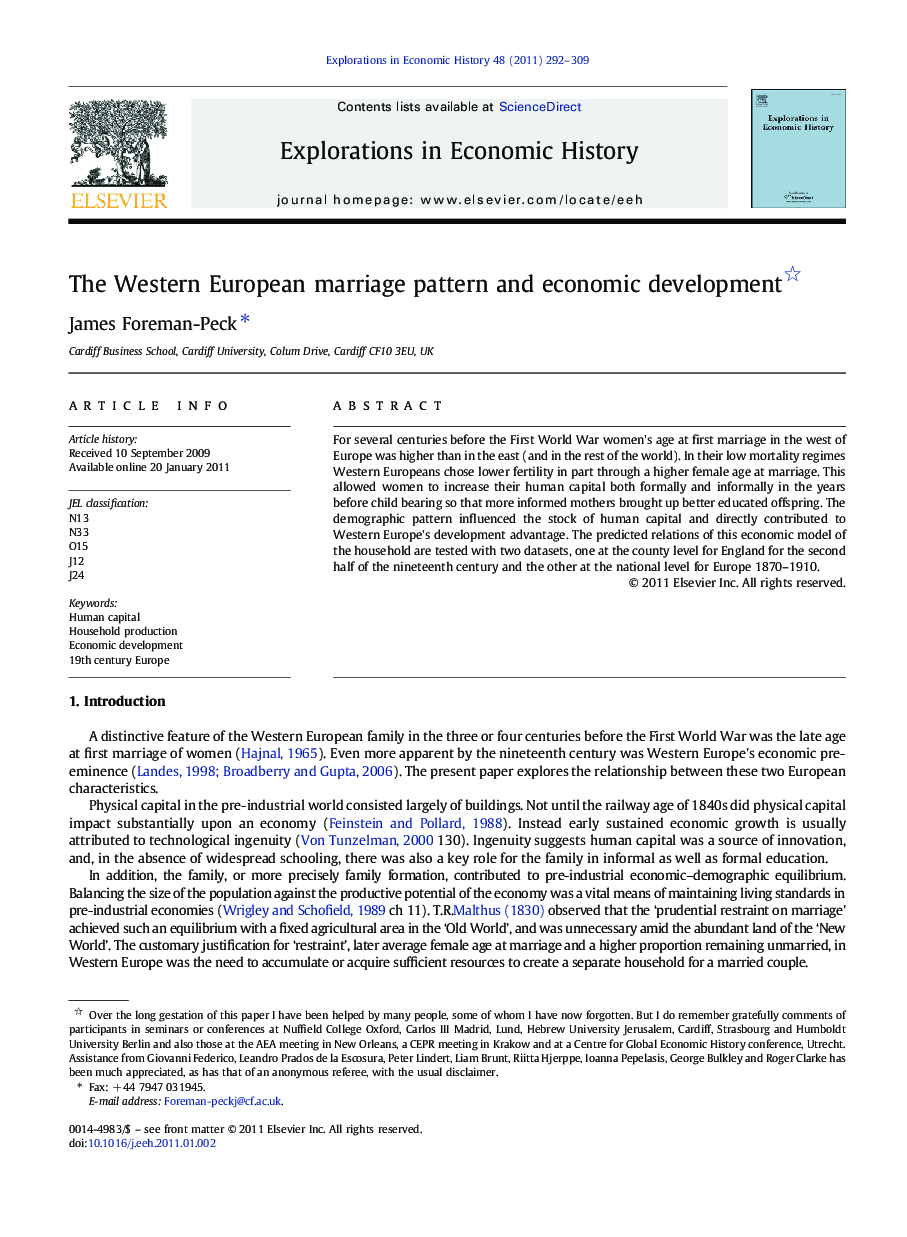| Article ID | Journal | Published Year | Pages | File Type |
|---|---|---|---|---|
| 5068884 | Explorations in Economic History | 2011 | 18 Pages |
Abstract
For several centuries before the First World War women's age at first marriage in the west of Europe was higher than in the east (and in the rest of the world). In their low mortality regimes Western Europeans chose lower fertility in part through a higher female age at marriage. This allowed women to increase their human capital both formally and informally in the years before child bearing so that more informed mothers brought up better educated offspring. The demographic pattern influenced the stock of human capital and directly contributed to Western Europe's development advantage. The predicted relations of this economic model of the household are tested with two datasets, one at the county level for England for the second half of the nineteenth century and the other at the national level for Europe 1870-1910.
Related Topics
Social Sciences and Humanities
Arts and Humanities
History
Authors
James Foreman-Peck,
